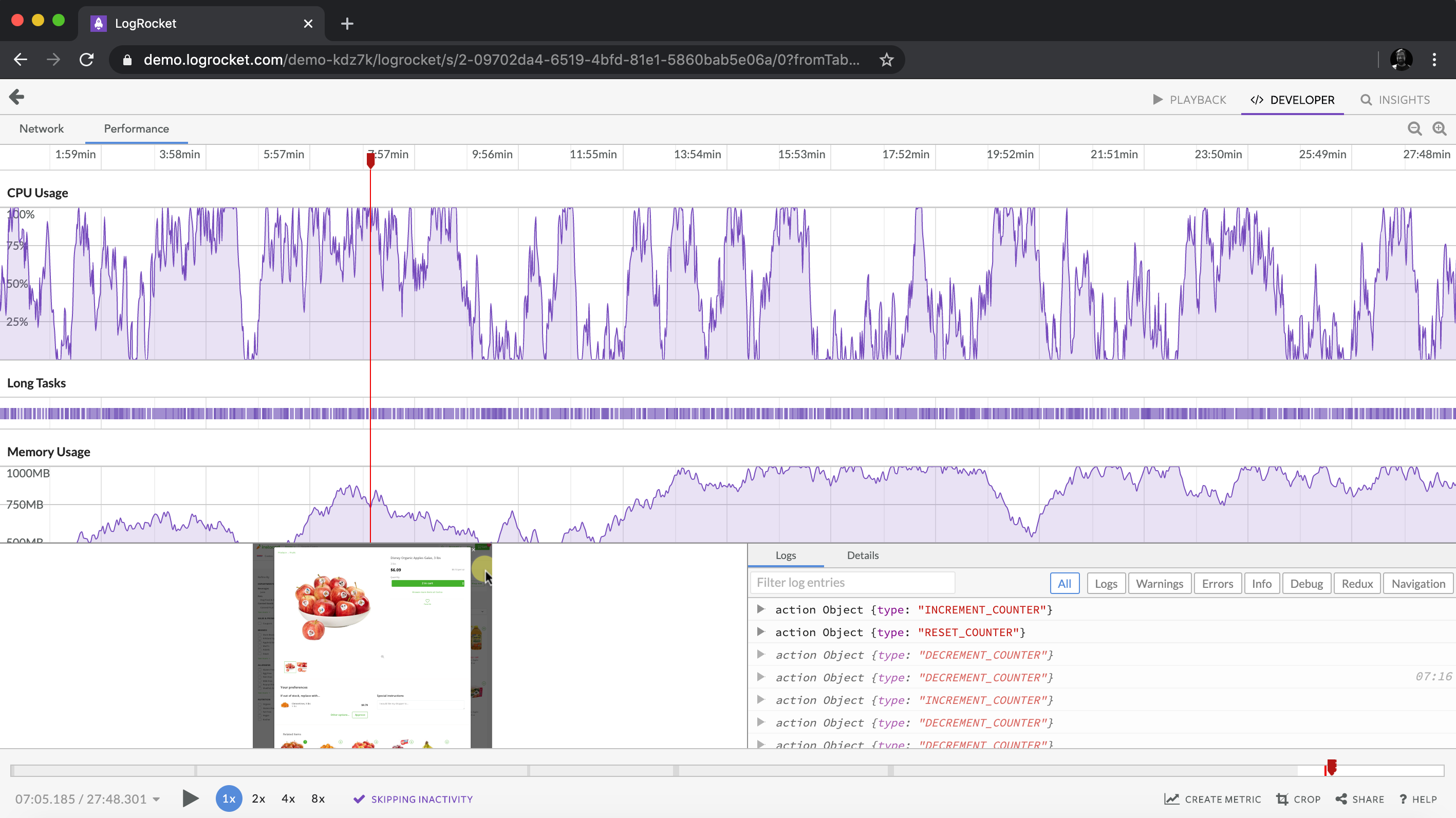
Editor’s note: This guide to removing unused CSS code with PurgeCSS was last updated by Elijah Agbonze on 9 June 2023 to reflect recent changes to PurgeCSS. This update also includes new sections on using PurgeCSS with React and Vue.js and a deeper explanation of PurgeCSS. To explore more CSS optimization techniques, visit our guide to the best practices for minifying CSS.

CSS frameworks are collections of style sheets that are preprepared in advance and come ready to use. Developers opt for CSS frameworks to deliver digital experiences in a more intuitive, efficient, and standards-compliant manner.
However, CSS frameworks can also cause problems. It’s unlikely that you’ll use every feature offered in a CSS framework, meaning unused code will be leftover in your final application. Unused code can result in a larger file size, harm performance, make it easy to lose track of each item, and cause optimization problems.
Removing unnecessary code will make your website load faster because the browser will request and parse less code. In this tutorial, we’ll explore PurgeCSS, a tool for removing unused CSS code. With PurgeCSS as a part of our development workflow, we can easily remove unused CSS, resulting in smaller CSS files and improving our application overall.
Jump ahead:
The Replay is a weekly newsletter for dev and engineering leaders.
Delivered once a week, it's your curated guide to the most important conversations around frontend dev, emerging AI tools, and the state of modern software.
When using CSS frameworks like Tailwind CSS and Bootstrap, we often find ourselves with CSS codes not used in our project. This can play a huge role in generating performance issues like longer page load times for your application.
For example, Tailwind uses PurgeCSS to remove unused CSS from final builds automatically. Netflix Top 10 uses Tailwind on its entire website and only requires 6.5kB for the CSS file. The CSS file would be ten times the final build size without removing unused CSS.
This is because, during development, you use classes or make declarations that you wind up not using. This isn’t an error on the developer’s part. These things are bound to happen. So, the more classes are being generated (as in Tailwind, for example) for just trying out a design you have in mind, the more your CSS file grows.
PurgeCSS is a tool used to remove unused CSS. It is very often useful for optimizing your applications for production. When you use CSS frameworks like Bulma, Bootstrap, or Tailwind, you’ll find yourself with lots of unused CSS. While this is good during development, it can be a real performance issue for production.
This is where PurgeCSS comes in. It analyzes your content as well as your CSS files to determine which styles are unused and removes them instantly. PurgeCSS works with the most common JavaScript libraries/frameworks like Vue.js, React, Gatsby, and more.
While PurgeCSS is not the only tool for removing unused CSS, it stands out thanks to its modularity, ease of use, and wide range of customization options. Modularity enables developers to create module extractors for specific use cases and frameworks. An extractor is a function that reads the contents of a file and extracts a list of CSS selectors that are used.
PurgeCSS provides a very reliable default extractor that can work with a wide range of file types. However, by default, PurgeCSS ignores unused CSS code containing special characters like @,:, and /. Therefore, PurgeCSS may not fit the exact file type or CSS framework that you’re using.
Additionally, PurgeCSS has a wide range of options that allow you to customize its behavior according to your needs. For example, PurgeCSS includes options for fontFace, keyframes, extractors, css, and more. Customization can improve the performance and efficiency of PurgeCSS.
And finally, PurgeCSS is very easy to get started with and includes thorough documentation. At the time of writing, PurgeCSS is loved by developers, with 900k+ weekly downloads on npm and 7.4k GitHub stars.
PurgeCSS, which works best for production builds, and analyzes your content and CSS and removes the unused styles. The contents indicate the page(s) that use your styles. Running PurgeCSS during development can be unnecessary. This is because during development, you’d often create unused styles, and it would mean you’d have to run PurgeCSS every time.
Instead, you can run it for just the production build. This way, you won’t have to recreate removed styles. So, when your app is ready for production, you can run PurgeCSS once. Before we jump into using PurgeCSS with popular libraries/frameworks, let’s take a look at how it works with vanilla JavaScript. Check out the following code:
(async () => {
const purgecss = await new PurgeCSS().purge({
content: ['index.html'],
css: ['style.css'],
});
console.log(purgecss);
})();
The code above is a simple example of using PurgeCSS. We specified index.html as one of the contents and style.css as one of the CSS. We can have more content and CSS files; interestingly, the contents are not limited to HTML files (we will see more later). The example above returns an array of the purged styles.
There are more options other than just content and css for specifying exactly what you want it to do and how you want it to do it; we will take a look at that in a moment. The example above can be used for any vanilla JavaScript project. To use it, you need to have a separate JavaScript file you will run once to remove unused styles.
So, if your app is ready to be built and sent, create the new js file, paste the code, and run it. Right now, we are only logging purgecss, but you can change that. And, instead of logging the result, you’d have the purged styles replace the current styles:
const { PurgeCSS } = require('purgecss');
const fs = require('fs');
(async () => {
const purgecss = await new PurgeCSS().purge({
content: ['index.html'],
css: ['style.css'],
});
fs.writeFileSync('style.css', purgecss[0].css);
})();
As you can see, replacing the purged styles with the current styles is way easier with JavaScript frameworks/libraries.
PurgeCSS is compatible with popular JavaScript libraries/frameworks like React, Vue, Gatsby, Next.js, Nuxt.js, etc. But, in this tutorial, we will only take a look at using PurgeCSS with React and Vue.
First, open up your terminal and run the following command to install React using Create React App:
npx create-react-app purgecss-react-tutorial
Next, move into the purgecss-react-tutorial directory we just created:
cd purgecss-react-tutorial
Now, go ahead and install PurgeCSS and its dependencies:
npm i --save-dev @fullhuman/postcss-purgecss
Open your App.js file and paste the following code:
import "./App.css";
function App() {
return <div className="App"></div>;
}
export default App;
In the code above, we created a functional component called App and returned a div with a classname of App. Our App.css is left untouched, so it contains the following unused CSS code:
.App {
text-align: center;
}
.App-logo {
height: 40vmin;
pointer-events: none;
}
@media (prefers-reduced-motion: no-preference) {
.App-logo {
animation: App-logo-spin infinite 20s linear;
}
}
.App-header {
background-color: #282c34;
min-height: 100vh;
display: flex;
flex-direction: column;
align-items: center;
justify-content: center;
font-size: calc(10px + 2vmin);
color: white;
}
.App-link {
color: #61dafb;
}
@keyframes App-logo-spin {
from {
transform: rotate(0deg);
}
to {
transform: rotate(360deg);
}
}
Open up your package.json file and add the following line under scripts:
"postbuild": "purgecss --css build/static/css/*.css --content build/index.html build/static/js/*.js --output build/static/css"
post is a prefix that can be added to any npm script and will automatically run when you run the main script. In our case, postbuild runs after the build script is executed. The command executed by postbuild contains three options. The --css option specifies what CSS files PurgeCSS should process.
It can be an array of filenames or globs. The --content option is similar to the --css option, specifying what content should be analyzed by PurgeCSS. The --output option specifies what directory you should write the purified CSS files to. By default, it places the result in the console.
In essence, the command executed by postbuild does the following:
build/static/cssbuild/static/cssNow, all you have to do is run npm run build to run the build of your React application. To confirm if you were successful, open the CSS file in build/static/css. The output looks like the code below, containing only the used CSS:
body {
-webkit-font-smoothing: antialiased;
-moz-osx-font-smoothing: grayscale;
font-family: -apple-system, BlinkMacSystemFont, Segoe UI, Roboto, Oxygen,
Ubuntu, Cantarell, Fira Sans, Droid Sans, Helvetica Neue, sans-serif;
margin: 0;
}
code {
font-family: source-code-pro, Menlo, Monaco, Consolas, Courier New, monospace;
}
.App {
text-align: center;
}
@-webkit-keyframes App-logo-spin {
0% {
-webkit-transform: rotate(0deg);
transform: rotate(0deg);
}
to {
-webkit-transform: rotate(1turn);
transform: rotate(1turn);
}
}
@keyframes App-logo-spin {
0% {
-webkit-transform: rotate(0deg);
transform: rotate(0deg);
}
to {
-webkit-transform: rotate(1turn);
transform: rotate(1turn);
}
}
Again, you’re going to open a terminal window and run the following command to create a new Vue project. First, make sure you have Vue CLI installed:
npm install -g @vue/cli
Now, run the command below to create a Vue project:
vue create purgecss-vue-tutorial
Next, move into purge-css-vue-tutorial and add PurgeCSS:
cd purgecss-vue-tutorial vue add @fullhuman/purgecss
This will generate a postcss.config.js file, and in this file are your PurgeCSS configurations already set to suit your Vue app. You can always change these configurations to best fit your needs. We will see how to make these changes in the next section of this article.
But, we don’t have to update the configurations for this tutorial. The default config is enough to get PurgeCSS up and running for this project. So, now let’s update some contents of our app and see PurgeCSS at work in Vue. Head up to HelloWorld.vue and replace the code there with the one below:
<template>
<a href="#">Hello world</a>
</template>
<script>
export default {
name: 'HelloWorld',
props: {
msg: String,
},
};
</script>
<!-- Add "scoped" attribute to limit CSS to this component only -->
<style scoped>
h3 {
margin: 40px 0 0;
}
ul {
list-style-type: none;
padding: 0;
}
li {
display: inline-block;
margin: 0 10px;
}
a {
color: #42b983;
}
span {
color: red;
}
</style>
We’ve reduced the content and added some unused styles to it (for demonstration only). Now, let’s build our application to see the CSS in the final build of our app. In your terminal, run npm run build, and wait for the build to complete. To confirm, open the CSS file in dist/css, and you will find the output of the CSS containing only the used styles:
a[data-v-70cf4e96] {
color: #42b983;
}
#app {
font-family: Avenir, Helvetica, Arial, sans-serif;
-webkit-font-smoothing: antialiased;
-moz-osx-font-smoothing: grayscale;
text-align: center;
color: #2c3e50;
margin-top: 60px;
}
So far, we’ve only seen three configuration options: content, css, and outline, but more configuration options allow you to customize PurgeCSS.
Prior to PurgeCSS v2.0, unused fontfaces and keyframes code were removed by default. However, when these features were used incorrectly, the code would break. Unused fontfaces and keyframes code are now left untouched by default. You can change this default behavior by setting the keyframes and fontfaces options to true:
(async () => {
const purgecss = await new PurgeCSS().purge({
content: ['index.html'],
css: ['style.css'],
keyframes: true,
fontFaces: true,
});
console.log(purgecss);
})();
The configuration options can also be in a config file that is purgecss.config.js:
// purgecss.config.js
module.exports = {
content: ['index.html'],
css: ['style.css'],
keyframes: true,
fontFaces: true,
}
(async () => {
const purgecss = await new PurgeCSS().purge('./purgecss.config.js');
console.log(purgecss);
})();
You can directly pass in the value of both content and css without linking a file to it as we’ve been doing. Here’s what that looks like:
// purgecss.config.js
module.exports = {
content: [
{
raw: '<html><body><p>Hello world</p></body></html>',
extension: 'html',
},
],
css: [
{
raw: 'p { color: red }',
},
],
};
In some very rare cases, PurgeCSS may not be able to remove unused CSS or remove used CSS. In that case, you’d have to use a custom extractor. PurgeCSS relies on extractors to get the list of selectors used in a file.
There are packages that provide extractors for specific extensions. For example, purgecss-from-js is specific to .js extensions. Using a specific extractor for an extension should provide the best accuracy:
// purgecss.config.js
import purgeJs from 'purgecss-from-js'
import purgeHtml from 'purgecss-from-html'
const options = {
content: ['index.html'],
css: ['style.css'],
extractors: [
{
extractor: purgeJs,
extensions: ['js']
},
{
extractor: purgeHtml,
extensions: ['html']
}
]
}
export default options
By default, your unused CSS variables are not removed. If you want to remove them, you’d have to specify variables as true in your purgecss.config.js file:
module.exports = {
content: ['index.html'],
css: ['style.css'],
variables: true,
}
You can indicate which selectors are safe to leave in the final CSS. We can accomplish this in two ways: the PurgeCSS option safelist or the special CSS special comment. Using safelist:
module.exports = {
content: ['index.html'],
css: ['style.css'],
safelist: ['random', 'button'],
}
In this case, .random, #random, button, .button, and #button will all be ignored and not removed by PurgeCSS. You can take it to the next level using Regular expressions:
module.exports = {
content: ['index.html'],
css: ['style.css'],
safelist: [/red$/, /^bg/],
}
In this case, any selector that ends with red (e.g., bg-red, btn-red) or that starts bg (e.g., bg-blue, bg-red) will not be removed. By default, comments are not removed by PurgeCSS. Only special comments that are meant to customize the behavior of PurgeCSS are removed.
One common special set of comments is the ones used to specify which selectors are safe to leave in the final CSS:
/* purgecss start ignore */
h1 {
color: pink;
font-size: 2rem;
}
/* purgecss end ignore */
In this article, we explored PurgeCSS, a tool to remove unused CSS from your code, thereby reducing file size and improving optimization. We covered the major offerings of PurgeCSS, including its modularity, customization options, and ease of use.
Then, we reviewed the steps required to get started with PurgeCSS on React as well as Vue, and some configuration options to help customize PurgeCSS to fit our needs.
Even if you decide to use a CSS framework like Tailwind, Bootstrap, MaterializeCSS, or Foundation, PurgeCSS should work perfectly. I hope you enjoyed this article!
As web frontends get increasingly complex, resource-greedy features demand more and more from the browser. If you’re interested in monitoring and tracking client-side CPU usage, memory usage, and more for all of your users in production, try LogRocket.

LogRocket lets you replay user sessions, eliminating guesswork around why bugs happen by showing exactly what users experienced. It captures console logs, errors, network requests, and pixel-perfect DOM recordings — compatible with all frameworks.
LogRocket's Galileo AI watches sessions for you, instantly identifying and explaining user struggles with automated monitoring of your entire product experience.
Modernize how you debug web and mobile apps — start monitoring for free.

Discover what’s new in The Replay, LogRocket’s newsletter for dev and engineering leaders, in the January 7th issue.

useEffectEventJack Herrington breaks down how React’s new useEffectEvent Hook stabilizes behavior, simplifies timers, and enables predictable abstractions.

AG-UI is an event-driven protocol for building real AI apps. Learn how to use it with streaming, tool calls, and reusable agent logic.

Frontend frameworks are often chosen by default, not necessity. This article examines when native web APIs deliver better outcomes for users and long-term maintenance.
Would you be interested in joining LogRocket's developer community?
Join LogRocket’s Content Advisory Board. You’ll help inform the type of content we create and get access to exclusive meetups, social accreditation, and swag.
Sign up now
7 Replies to "Guide to removing unused CSS code with PurgeCSS"
So what happens when you need the css features that has been purged?
Keep in mind that PurgeCSS doesn’t touch your source CSS files, just the ones that are output by the build process. So if you add new code that needs CSS rules that were previously purged, then the next time you build your app PurgeCSS will see that your code is using some new rules and will not purge them in that build.
In frameworks such as Angular, you can use scss which is complied down to css. Is there any way to achieve this on scss?
It doesn’t make sense to run it on SCSS because other SCSS files might be referencing your code dynamically elsewhere. You can transpile it to CSS, then run the process on CSS as part of your CI pipeline or have a local git hook to do so. It has the same effect.
Is that possible to use purgeCSS in angularjs version 1.5?
With Gulp i cant get it to work… dont get any error messages but the css is still there…
So how do you use this on a standard static HTML website? What if someone does not use any javascript or php frameworks?